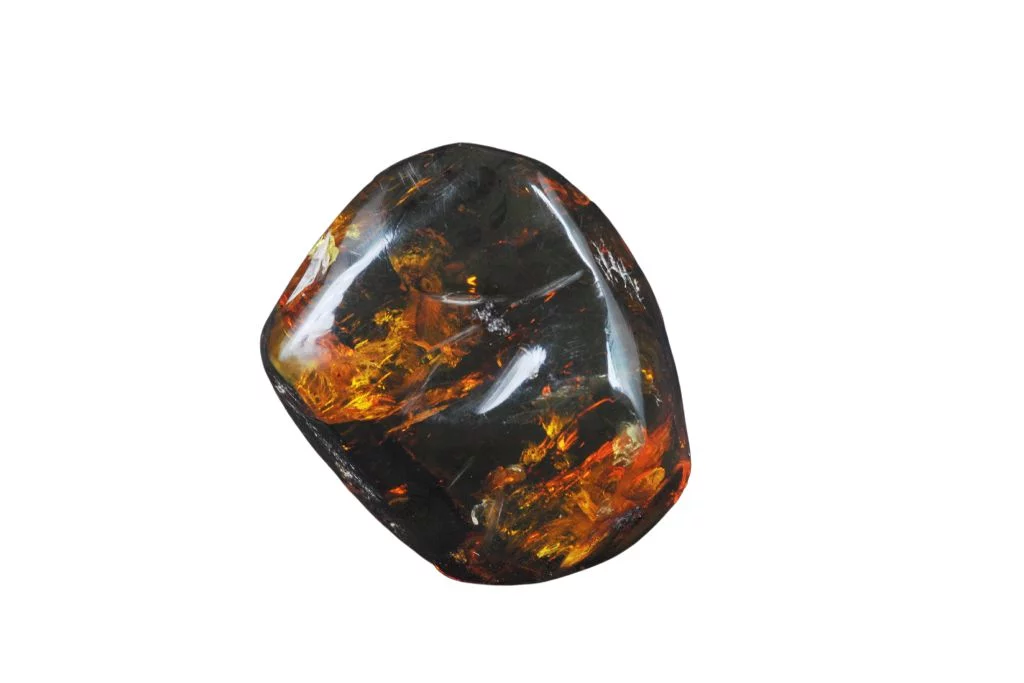Color and Transparency of Amberoid
Amberoid, a synthetic material designed to mimic natural amber, typically exhibits a range of warm, golden hues. Its color palette spans from pale yellow to deep orange and rich brown tones, closely resembling the appearance of genuine amber. The material often possesses a translucent to semi-transparent quality, allowing light to pass through and creating a captivating visual effect. This transparency can vary depending on the specific manufacturing process and intended use of the amberoid.
Structure and Composition
Unlike natural amber, which is formed from fossilized tree resin, amberoid is composed of synthetic resins and polymers. Its structure is generally uniform and lacks the natural inclusions often found in genuine amber. The material can be molded or cast into various shapes and sizes, making it versatile for use in jewelry and decorative objects. Amberoid’s composition allows for a consistent texture and hardness, typically resulting in a smooth and polished surface.
Notable Physical Characteristics
Amberoid possesses several distinctive physical traits that set it apart from natural amber. It often has a lighter weight compared to genuine amber, due to its synthetic composition. The material also tends to have a lower melting point and may feel warmer to the touch than natural amber. Amberoid can be crafted to include simulated inclusions, such as bubbles or insect-like shapes, to mimic the appearance of natural amber specimens. However, these inclusions are artificially created and lack the authenticity of those found in genuine amber.
Unique Features
One of the most notable aspects of amberoid is its ability to be produced in large, consistent quantities and shapes that may be difficult to find in natural amber. This characteristic allows for the creation of larger decorative objects or perfectly matched sets of jewelry pieces. Additionally, amberoid can be infused with various dyes or additives to create a wide range of colors and effects not typically found in natural amber, such as fluorescent hues or sparkly inclusions. These unique features make amberoid a popular choice for affordable amber-like jewelry and decorative items.
Historical and Cultural Significance of Amberoid
Amberoid, also known as pressed amber or reconstructed amber, has played a minor but interesting role in jewelry and decorative arts since the late 19th century. While not as highly valued as genuine amber, amberoid has allowed for the creation of larger amber-like objects and made amber-style jewelry more accessible to a wider audience. In some cultures, amberoid has been used as an affordable substitute in traditional amber amulets and talismans.
Metaphysical Associations
Despite being a manufactured material, amberoid is sometimes attributed similar metaphysical properties to natural amber. Some believe it carries a warm, positive energy and can help to cleanse and purify the environment. Others associate it with the solar plexus chakra, claiming it can boost self-confidence and personal power. However, many practitioners of crystal healing prefer natural amber for its perceived stronger energetic properties.
Common Uses and Applications
Amberoid finds its primary use in jewelry making, where it is crafted into beads, pendants, and decorative objects. It is also utilized in the creation of larger sculptural pieces that would be prohibitively expensive or impossible to make with natural amber. In some cases, amberoid is used in the restoration of antique amber objects, filling in gaps or replacing missing pieces. Additionally, it serves as an educational tool in geology and materials science classes, demonstrating the properties of polymer materials.
Benefits and Perceived Advantages
The main benefit of amberoid is its affordability compared to genuine amber, making amber-like aesthetics more accessible. It allows for the creation of larger, more intricate designs that would be challenging with natural amber. Amberoid is also more durable than natural amber, resisting chipping and cracking better. Some people appreciate amberoid for its eco-friendly aspect, as it can be made from amber dust and fragments that might otherwise go to waste. While it may not carry the same mystical allure as natural amber, amberoid offers a practical alternative for those seeking the warm, golden glow associated with this ancient resin.

